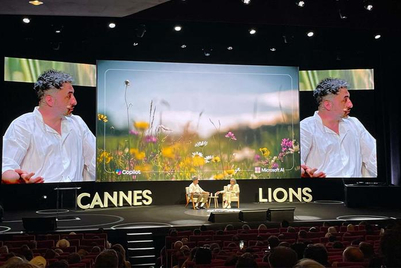
When is a Dyson vacuum a piece of art? When it is hanging in the home of a young student from Chongqing. This Millennial took the British company’s focus on product aesthetics a step beyond mere cleaning device. In this apartment, the Dyson device has transcended its traditional functionality for a much loftier one: signifying an aspirational, tech-led lifestyle.
“I have no idea if it’s any good. I don’t use it,” he laughed, only to reveal a Toshiba vacuum hidden out of sight under the stairs. “I do the cleaning with this.” In modern life, the symbolic nature of luxury is integral to its value. Interestingly, China’s Gen Z curate brands, ancient traditions and every day items all together; how they harmonise and hold their meaning is what’s new.
Dyson is just one example of a brand that has unlocked the fascinating symbolic universe of this demographic. Yet, when it comes to China, brands shouldn’t only look at what consumers are buying but why, according to Jerry Cloyde of The Solution Consultancy, who uncovered the Dyson example. Decoding this symbolism and understanding its importance is becoming a vital entry point for luxury.
“It is important to understand what consumers gain emotionally or physically from a self-actualisation standpoint,” Clode explained. “I don’t think luxury brands grasp that beyond trying to insert themselves within this culturally symbolic world.”
Take the mushrooming of hip hop in China, for example. It is now a source of inspiration for a host of shows, idols, and clothing lines, despite the clampdowns. The genre is popular with young fans as it not only offers an outlet of expression, but a sense of ritual in each of its four pillars: turntablism, MCing, breakdancing, and graffiti. Each show religiously references these components.
The interactive online platform Bilibili, another outlet for spontaneous content primarily built around Gen Z’s beloved AGC content, is another example of this universality. Here, users learn and share content and a passion for Chinese traditional culture, including handicraft, poetry, philosophy, and music. It has boosted the revival of Hanfu through videos such as How I Spend One Year to Make the Six Dynasties Handmade Clothing, which has millions of views. Harper’s Bazaar China’s September issue featured a special edition on Han clothing among its swathes of contemporary global names.
Like Bilibili, the world of gaming also provides a rich tableau of symbols for brands to engage with. These are often based on fantasy, similar to the spontaneous content on the ACG mecca. Moreover, being part of movements like hip hop or gaming is also a way for these young fans to show their “internationalism.” These young citizens’ symbolic universe is often partially constructed from formative sources, such as traditional education, influences from Japan during teenage years, and a period of globalism during their late teens and twenties.
This trajectory is what makes them stand out from their global contemporaries. We all want luxury items. For these young Chinese, who are often unfairly read as vacuous over-consumers, is this eclectic curation any more meaningful? Sam Ng, marketing director at the digital marketing platform Vfluencer, says that young shoppers buy brands today for “the emotion that brands ooze.” He suggests that names like Dyson won the hearts of Chinese shoppers with their stylish design and leading technology.
Often, well-designed international tech labels offer this internationalism, too. “Chinese consumers buy what the brand signifies because it makes them feel good,” Ng said. “It’s a symbol of being a well-traveled, fashion-forward, and a style leader among peers, not just wealth.” He uses the term, Wen Qing “文青” — or cultured youngster — to refer to someone who likes to use high-end electronic products, like “iPhone, Apple AirPods, and Dyson,” and “carry Starbucks coffee.” He also cited the recent Olympic debut of skateboarding tapped by Vans, which has redefined the sport as a symbol of “young, trendy and freedom.” Its official video campaign published on Weibo drew more than 130 million views.
Still, does it go deeper than that? And, just because a context or movement is popular, does that mean brands can insert themselves into the scenario and think “job done?” Not for Clode: “Gen Z are hanging out in virtual spaces, where they outwardly seek symbols as forms of self-actualisation or personality development. This is also why we see brands foisted into settings like in-game placements or skins, which doesn’t always work.”
Instead he points to Starbucks. When it introduced its vegan menu in China, the campaign played with Communist symbolism (often a starting point for Western thinking). But this was, in fact, a fresh, nuanced take on China’s rich culture. The choice of androgynous superstar Li Yuchun (aka Chris Lee) serves as a context for younger consumers to engage in a new form of eating. Given the comparatively “genderless thinking” of younger generations, Lee offered the ideal launchpad for this aspirational behaviour.

Lee also appears in a recent campaign for Chinese shoe retailer Belle, laden with a bricolage of symbols in a museum setting including winged unicorns, hot air balloons, flying artifacts, and accessories. The video works hard to speak to young shoppers through this curated selection of disparate objects, what Clode calls “postmodernity.”
However, China’s Gen Z and young millennial thinking goes even further. For them, symbols are both a continuum of ideas and history, as well as being completely of the now. Take RCA-graduate Feng Chen Wang’s guest cover for SuperElle magazine. The streetwear designer’s offering, digitally hand-drawn, was inspired by a book from the 4th century BC. A collage of photography and illustration, what is striking is how the juxtaposition seems to resolve its tensions. The styles blend into one another like the lines of watercolor technique which the image references. In the top corner, the phoenix, a symbol of male and female beings: something that is both neutral, and many things — all at once.



.jpg&h=334&w=500&q=100&v=20250320&c=1)


.png&h=334&w=500&q=100&v=20250320&c=1)




.png&h=334&w=500&q=100&v=20250320&c=1)

.jpg&h=268&w=401&q=100&v=20250320&c=1)
.jpg&h=268&w=401&q=100&v=20250320&c=1)
.jpg&h=268&w=401&q=100&v=20250320&c=1)
.jpg&h=268&w=401&q=100&v=20250320&c=1)
.png&h=268&w=401&q=100&v=20250320&c=1)
.png&h=268&w=401&q=100&v=20250320&c=1)

